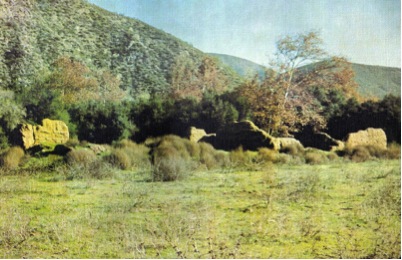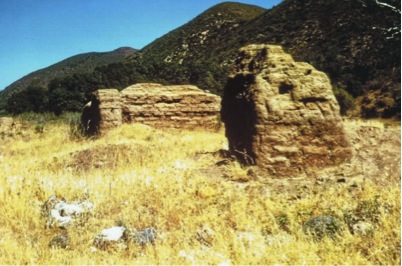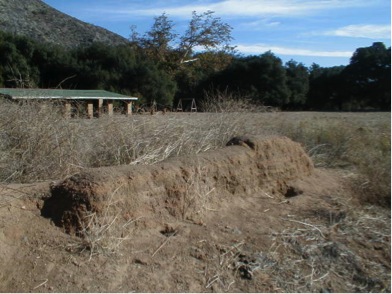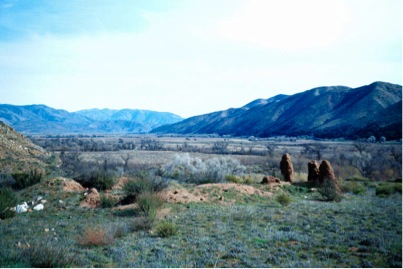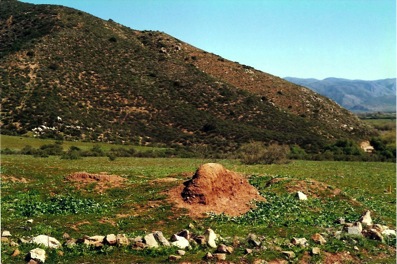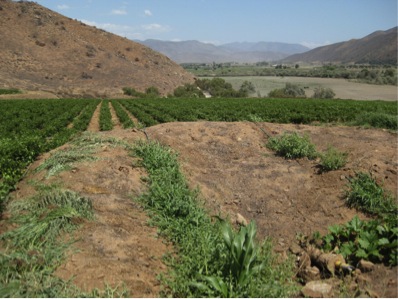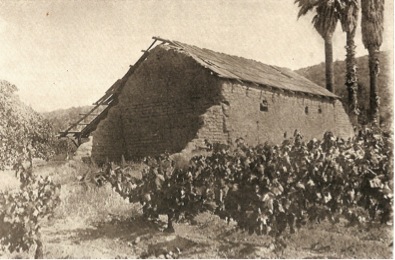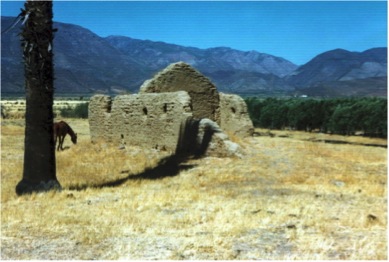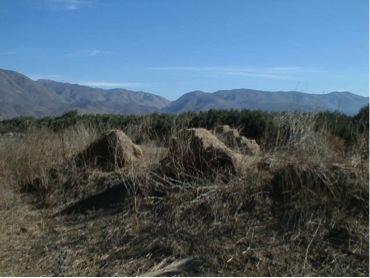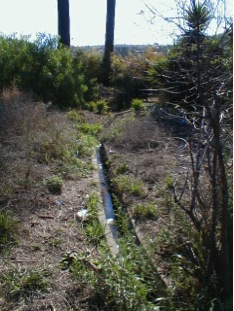
By David Kier
www.vivabaja.com
Co-author of ‘The Old Missions of Baja & Alta California, 1697-1834’
The future site for the fifth Dominican Baja California mission was discovered in 1769 and named San Francisco Solano, by Franciscan Padre Juan Crespí. In April, 1785, ‘San Solano’ was visited by Dominican Padre Luis Sales and a party of soldiers from the mission of San Vicente while searching for potential mission sites. After Mission San Miguel was founded (in 1787), the governor requested the wide gap between San Vicente and San Miguel be reduced with a mission between them. During one of Sales’ expeditions to San Solano, he was attacked by the native Indians, wounded, and thrown from his horse. While “half-dead”, Sales hid while the Indians chased the soldiers, who returned later to rescue the Padre.
Mission Santo Tomás de Aquino was founded on April 24, 1791 by Padre José Loriente at a place called by the natives ‘Copaitl coajocuc’ (crooked sycamore). This Dominican mission fulfilled their original mandate to occupy the frontier territory between Mission San Fernando de Velicatá and San Diego, along El Camino Real. The Indian neophyte population in the first year at Santo Tomás was 96.
According to a missionary’s letter, sickness developed the second year at Santo Tomás and he attributed the problem to the marsh: “… the heathen did not live where the mission is, but further up the plain, where the air is pure and there are no mosquitoes or gnats because the land is clearer.”
A 1793 report described the mission church as a small adobe structure 14 feet by 34 feet with a roof of poles and mats. A dwelling for the missionaries was also constructed of the same materials. This first location chosen for the mission had been questioned by Governor Fages because it could be swept away by floods in the narrow canyon. Also, that sunlight would be blocked a third of the day by the height of the hills.
On May 31, 1794 the mission was moved a mile east and higher up the valley. This places it on the north side of the arroyo, with full sunlight. The reason given for the move was the first site being too near mosquito infested swamps and was unhealthy. At the second location a new church building was made of adobe with a roof of poles and tules. Another building of the same materials was made for the priests.
Horse, mules, cattle, sheep and goats were all raised at the mission. Grain was planted and yields increased, yet in 1798 Padre Miguel López wrote to the governor asking that the mission be moved one more time further east, where more land could be put under cultivation.
The final move was made in 1799, just over three miles to the east where four buildings were constructed. In 1800, work continued on the church and other buildings. The neophyte population reached the highest at 262. The church was 85 feet long and 18 feet wide with a flat, earth covered roof. A sacristy was 20 feet by 15 feet. Several other buildings were erected by 1801 that included storerooms and living quarters for single girls.
Raising crops and livestock all were successful at the third site for the mission. The valley continues to this day to grow grapes for the famous Santo Tomás brand wine. Trading with foreign sea captains at the bay of Ensenada (Ensenada de Todos Santos) was reported. This exchange was an important source of revenue during years of isolation while Mexico was fighting Spain for independence (1810-1821).
The Dominican priests who served at Santo Tomás include: José Loriénte (to 1798), Miguel López (1797 to Jan. 13, 1803 when murdered by Indians), Eudaldo Surroca (to May 19, 1803 when he was murdered by four Indians), Segismundo Fontcubierta (1798), José Miguel de Pineda (1812 to 1822), and Tomás Mansilla (1825-1849). Padre Mansilla departed Baja California from La Paz in Feb, 1855 with the only other remaining Dominican on the peninsula, Fr. Gabriel Gonzalez.
Mission Santo Tomás de Aquino was the last California mission remaining in service. The year was 1849 and while Padre Mansilla was at San Diego he left his brother in charge at Santo Tomás. On June 10, 1849, Agustín Mansilla y Gamboa wrote to his brother Fray Tomás that people traveling north for the gold fields were robbing locals and the mission church. An Indian was reported to have stolen altar valuables and sold them to the 49ers passing through. That seemed to be the final straw!
None of the three sites for this mission have any kind of preservation. They are all on private property and INAH (National Institute of Anthropology and History) has not performed any kind of protection as of this writing. The photos illustrate the vanishing of these unprotected adobe buildings.
The first (1791) site is nearly gone, with just a small section of wall remaining and is located next to an oak tree picnic area, along a running stream. From Highway One on the north side of the Santo Tomás Valley, take the graded dirt road west (signed for La Bocana and Puerto Santo Tomás). Go 3.4 miles and take a road to the left and go ½ mile more to the clearing next to the picnic area.
The second (1794) mission site has only a small area of melted adobe and rocks and is in a planted field, a few hundred feet north of the same La Bocana road, about a mile back towards Highway One from the first site. Highway One to the second site is 2.8 miles.
The 1799 (third and final) site is on the east side of Highway One as you enter the town of Santo Tomás, by the tall palm trees, north of the El Palomar campground. The mission aqueduct is near the site and still carries water from the spring.
Some books mention only two sites for Santo Tomás. Some books have called the second site ‘the first’, never mentioning the extensive adobe complex once seen at the true first site. Some books have not mentioned the second site and only the first and final sites! Some have reported that road construction destroyed one site. I have found adobe remains at all three sites since these books were written.
The photos show how the unprotected adobe brick walls are susceptible to weathering. In a 1916 letter about his 1887 expedition to save Dominican artifacts, Fr. James Newall,O.P. wrote this:
“But let us say at once, we found very little to describe. Since Mexico’s achievement of independence from Spain, and the expulsion of the Spanish Friars from the Peninsula — that is, for a period of seventy years — those missions had been utterly abandoned, and, what is worse, adventurers and interlopers from Sonora — who constitute the present owners of the Mission lands — after driving and killing off the Indians, dismantled the churches and monasteries, seized on and sold the valuable church furniture and works of art, and even tore the tiles from the Mission roofs for their own huts, thus exposing the walls to the dissolving action of the rains, so that there is hardly a Mission in that country of which it might not be said, Etiam ruinae perierunt! Even the ruins have perished.”
The founding of all 48 California missions, in their correct order, with some history on each is included in the book ‘The Old Missions of Baja & Alta California, 1697-1834’ by Max Kurillo, Erline Tuttle and David Kier (2012). Santo Tomás was the 34th California mission founded, and the 23rd mission founded on the peninsula of Baja California.
Photos of the 1791 Site:
Photos of the 1794 site:
Photos of the 1799 site:

This photo was published in 1963 of some surviving artifacts from Mission Santo Tomás: a wafer oven for hosts, holy water pail, portable baptismal font, and leather-covered chest.
David Kier is co-author of ‘The Old Missions of Baja & Alta California, 1697-1834’. The book is available for purchase HERE or at the DBTC offices (call 800-727-2252).

